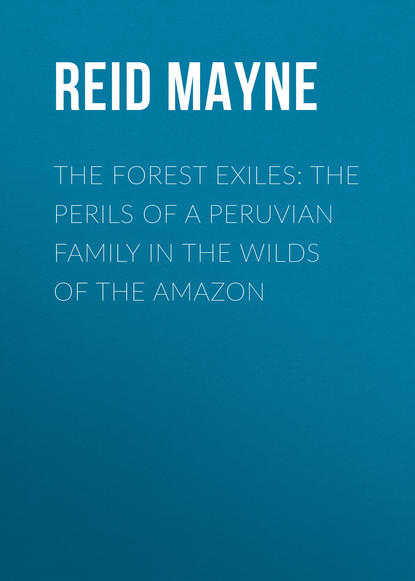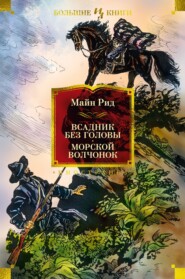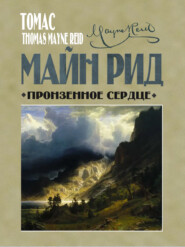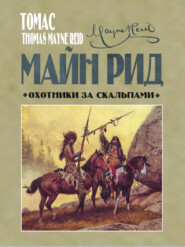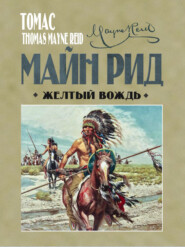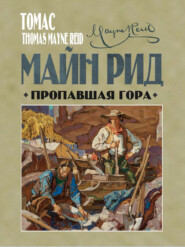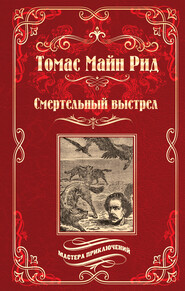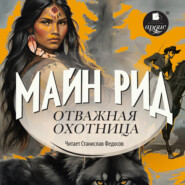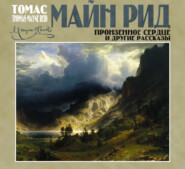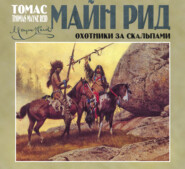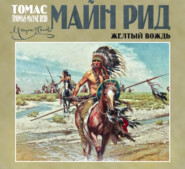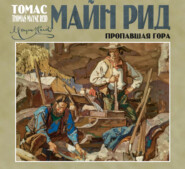По всем вопросам обращайтесь на: info@litportal.ru
(©) 2003-2024.
✖
The Forest Exiles: The Perils of a Peruvian Family in the Wilds of the Amazon
Настройки чтения
Размер шрифта
Высота строк
Поля
So much for the palo de vaca.
It still remains for me to tell you where the salt came from; and although the milk-tree was ever so welcome, yet the salt was a thing of still greater necessity. Indeed, the latter might be looked upon as an indispensable article in household economy. You, my young reader, know not what it is to be without salt. With whole sacks of this beautiful mineral within your reach, almost as cheap as sand, you cannot fancy the longing – the absolute craving – for it, which they feel who are for a period deprived of it. Even the wild animals will make long journeys in search of those salt-springs – or, as they are called, “licks” – which exist in many places in the wilderness of America. For salt, Don Pablo and his companions would have exchanged anything they had, – their sugar, plantains, cocoa, coffee, or even the cassava, which was their bread. They longed for salt, and knew not how they could get on without it. The only substitute was the “aji,” or capsicum, of which several species grew around, and almost every dish they ate was strongly spiced with it. But still this was not salt, and they were not contented with it.
It was now that they found a friend in Guapo. Guapo knew that among many of the Indian tribes the fruit of a certain species of palm was manufactured into salt; and he knew the palm, too, if he could only get his eyes upon it. Seeing his master and the rest so troubled upon this head, Guapo rose one morning early and stole off among the groves of palm, on the other side of the river. There, in a marshy place, with its roots even growing in the water, stood the very tree, – a small palm of about four inches in diameter and twenty to thirty feet high. It was thicker at the base than the top, and the top itself rose several feet above the tuft of pinnate, feathery fronds, ending in a pointed spike. It was the “jara” palm, of the genus Leopoldinia.
It was the fruits upon which Guapo bent his eyes with earnestness. Each one was as large as a peach, of an oval shape, slightly flattened, and of a yellowish green colour. They grew in large clusters among the bases of the leaves; and Guapo was not long in ascending several trees – for the jara is a smooth-skinned palm, and can be climbed – and breaking off the spadices, and flinging them to the ground. He had soon collected a bag-full, with which he hurried back to the house.
All wondered what Guapo meant to do with these fruits, for they tasted them and found them very bitter. Guapo soon showed them his intention. Having prepared a sort of furnace, he set the nuts on fire; and when they were thoroughly reduced to ashes, to the great joy and astonishment of all, these ashes, which were as white as flour, had the taste of salt! It is true it was not equal to “Turk’s Island,” nor yet to “Bay” salt, but it proved to be good enough for cooking purposes, and satisfied the craving which all had felt for this indispensable article.
Chapter Twenty One.
The Cannibal Fish and the Gymnotus
About this time an incident occurred that was very near having a fatal termination for one of the party – Leon. The day was a very hot one, and as the cool water looked inviting, Leon could not resist the temptation of taking a bath. Having undressed himself, he plunged into the river nearly in front of where the house stood, and began splashing about quite delighted. The rest were not heeding him, as each was engaged with some occupation within the house.
Leon at first kept wading about in a place that was not beyond his depth, but, by little and little, he took short swims, as he wished to practise, and become a good swimmer like Guapo. His father had not only given him permission, but had even advised him to do so. And it may be here remarked that all parents would do well to take the same course with their children and allow them to acquire this healthful and useful art. No one can deny that thousands of lives are annually sacrificed, because so few have taken the trouble to learn swimming.
Well; Leon was determined to be a swimmer, and at each attempt he made a wider stretch into the deep water, swam around, and then back again to the bank.
In one of these excursions, just as he had got farthest out, all at once he felt a sharp pain as if from the bite of some animal, and then another, and another, upon different parts of the body, as if several sets of teeth were attacking him at once!
Leon screamed – who wouldn’t have done so? – and his scream brought the whole household to the edge of the water in less than a score of seconds. All of them believed that he was either drowning or attacked by a crocodile. On arriving at the bank, however, they saw that he was still above water, and swimming boldly for the shore – no signs of a crocodile were to be seen!
What was the matter?
Of course that question was asked him by all of them in a breath. His reply was that “he could not tell —something was biting him all over!”
The quick eye of the mother now caught sight of blood – around the swimmer the water was tinged with it – her piercing shriek rent the air.
“O God! my child – my child! Save him – save him!”
Both Don Pablo and Guapo dashed into the water and plunged forward to meet him. In the next moment he was raised in their arms, but the blood streamed down his body and limbs, apparently from a dozen wounds. As they lifted him out of the water they saw what had caused these wounds. A shoal of small fish, with ashy-green backs and bright orange bellies and fins, was seen below. With large open mouths they had followed their victim to the very surface, and now that he was lifted out of their reach, they shot forward and attacked the legs of his rescuers, causing Don Pablo and Guapo to dance up in the water, and make with all haste for the bank. As soon as they had reached it, they turned round and looked into the water. There were these blood-thirsty pursuers that had followed them up to the very bank, and now swam about darting from point to point, and ready for a fresh attack on any one that might enter the water!
“They are the ‘cannibal fish!’” said Guapo, in an angry tone, as he turned to attend to Leon. “I shall punish them yet for it. Trust me, young master, you shall be revenged!”
Leon was now carried up to the house, and it was found that in all he had received nearly a dozen wounds! Some of them were on the calves of his legs, where the piece of flesh was actually taken out! Had he been farther out in the river, when first attacked, he might never have reached the shore alive, as the fierce creatures were gathering in far greater numbers when he was rescued, and would most undoubtedly have torn him to pieces and eaten him up! Such has been the fate of many persons who have fallen among the “cannibal fish” in the midst of wide rivers where they had no chance of escape. These ferocious little “caribes,” or “caribitos,” as they are called (for the word carib signifies cannibal), lie at the bottom of rivers, and are not easily seen; but the moment an attack is made by one of them, and a drop of blood stains the water, the whole shoal rises to the surface, and woe to the creature that is assailed by their sharp triangular teeth!
Of course the wounds of Leon, although painful, were not dangerous, but the chief danger lay in the loss of blood which was pouring from so many veins. But Guapo found ready to his hand the best thing in the world for stopping it. On some mimosa-trees, not far from the house, he had already observed – indeed, so had all of them – a very singular species of ants’ nests of a yellowish brown colour. The ants themselves were of a beautiful emerald green. They were the Formica spinicollis. These nests were composed of a soft cotton-down, which the ants had collected from a species of Melastoma, a handsome shrub found growing in these regions; and this down Guapo knew to be the best for blood-stopping. Even Don Pablo had heard of its being used by the Indians for this purpose, and knew it by the name of “yesca de hormigas,” or “touchwood of ants.” He had heard, moreover, that it was far superior even to the ants’ nests of Cayenne, which form an article of commerce and are highly prized in the hospitals of Europe. Guapo, therefore, ran off and robbed the green ants of their nests, and speedily returned with the full of his hands of the soft “yesca.” This was applied to the wounds, and in a few minutes the bleeding was effectually stopped, and Leon, although still suffering pain, had now only to be patient and get well.
Strange to say, another incident occurred that very evening, which taught our party a further lesson of the danger of taking to the water without knowing more of its inhabitants. Just as they had finished supper, and were seated in front of their new house, the mule, that had been let loose, stepped into the river to drink and cool its flanks. It was standing in the water, which came up to its belly, and, having finished its drink, was quietly gazing around it. All at once, it was observed to give a violent plunge, and make with hot haste for the bank. It snorted and looked terrified, while its red nostrils were wide open, and its eyes appeared as if they would start from their sockets. At length it reached the bank, and, staggering forward, rolled over in the sand, as if it was going to die!
What could all this mean? Had it, too, been attacked by the “caribes?” No; that was not likely, as the bite of these creatures upon the hard shanks of the mule could not have produced such an effect. They might have frightened it, but they could not have thrown it into “fits” – for it was evidently in some sort of a fit at that moment.
It might have been a puzzle to our party not easily solved, had Guapo not been upon the spot. But Guapo had witnessed such an incident before. Just before the mule gave the first plunge Guapo’s eyes had been wandering in that direction. He had noticed an odd-looking form glide near the mule and pass under the animal’s belly. This creature was of a greenish-yellow colour, about five feet in length, and four or five inches thick. It resembled some kind of water-snake more than a fish, but Guapo knew it was not a snake, but an eel. It was the great electric eel– the “temblador,” or “gymnotus.”
This explained the mystery. The gymnotus, having placed itself under the belly of the unsuspecting mule, was able to bring its body in contact at all points, and hence the powerful shock that had created such an effect.
The mule, however, soon recovered, but from that time forward, no coaxing, nor leading, nor driving, nor whipping, nor pushing, would induce that same mule to go within twenty feet of the bank of that same piece of water.
Guapo now bethought himself of the narrow escape he himself had had while swimming across to the palm-woods; and the appearance of the gymnotus only rendered him more determined to keep the promise he had made to Leon, – that is, that he would revenge him of the caribes.
None of them could understand how Guapo was to get this revenge without catching the fish, and that would be difficult to do. Guapo, however, showed them how on the very next day.
During that evening he made an excursion into the wood, and returned home carrying with him a large bundle of roots.
They were the roots of two species of plants – one of the genus Piscidea, the other a Jacquinia. Out of these, when properly pounded together, Guapo intended to make the celebrated “barbasco,” or fish-poison, which is used by all the Indians of South America in capturing fish. Guapo knew that a sufficient quantity of the barbasco thrown into the water would kill either “temblador,” caribe, or any fish that ever swam with fins.
And so it proved. In the morning Guapo having prepared his barbasco, proceeded to the upper end of the lake-like opening of the river, and there flung his poison into the stream. The slow current through the valley greatly favoured him, and from the large quantity of roots he had used, the whole pool was soon infected with it. This was seen from the whitish tinge which the water assumed. The barbasco had scarcely time to sink to the bottom when small fish were seen coming to the surface, and turning “wrong side uppermost.” Then larger ones appeared, and in a few minutes all the fish in that particular stretch of water, with several gymnoti, were seen floating on the surface quite dead. To the great joy of Guapo and Leon, who sat by the bank watching, hundreds of the little caribes, with their bronze gills quite open, and their yellow bellies turned up, were seen among the rest.
But Guapo had not made this great slaughter purely out of revenge. He had another object. They were not too well off for meat, and a dish of fish would be welcome. Guapo and Don Pablo had already provided themselves with long-handled nets, and they soon scooped out several basketfuls of fish. Among others they netted numerous “caribes,” for these little monsters, fierce as they are, are not surpassed for delicacy of flavour by any fish in the South American rivers. The gymnoti approached the bank, where Guapo fished them out, not to eat – although they are often eaten. There was not a spark of electricity in them now. The barbasco had cured them of that; any one might have handled them with safety, as there was not a charge left in their whole battery.
The lake was quite cleared of all its dangerous denizens, and Leon might bathe with safety, as soon as he got well; and over the fish-dinner they could now laugh at the adventures both of Leon and the electrified mule.
Chapter Twenty Two.
The Cinchona-Trees
In about two weeks from their arrival in the valley, the house, with a stable for the horse and mule, was completed, and all the necessary furniture as well. Had you entered the establishment about this time, you would have observed many odd articles and implements, most of them quite new. You would have seen boxes woven out of palm-leaves, and bags made of the fibrous, cloth-like spathe of the “bussu,” filled with the soft, silky cotton of the bombax, to be afterwards spun and woven for shirts and dresses. You would have seen baskets of various shapes and sizes woven out of the rind of the leaf-stalks of a singular palm called “Iú” (Astrocaryum), which has no stem, but only leaves of ten feet long, growing directly out of the ground. You would have seen chairs made of split palms and bamboo, and a goodsized table, upon which, at meal-time, might be noticed a table-cloth, not of diaper, but, what served equally well, the broad smooth silken leaves of the plantain. There were cups, too, and plates, and bowls, and dishes, and bottles, of the light gourd-shell (Crescentia cujete), some of the bottles holding useful liquids, and corked with the elastic pith of a palm. Other vessels of a boat-shape might be noticed. There were large wooden vessels pointed at the ends like little canoes. They were nothing more than the spathes or flower-sheaths of one of the largest of palms, the “Inaga” (Maximiliana regia). This noble tree rises to the height of one hundred feet, and carries feathery fronds of more than fifty feet in length. The spathes are so large that they are used by the Indian women for cradles and baskets; and their wood is so hard, that hunters often cook meat in them, hanging them over the fire when filled with water! Many other singular implements might have been noticed in the new home. One, a cylinder of what appeared to be wood, covered thickly with spinous points, hung against the wall. That was a grater, used for the manioc, or yucca roots; and it was a grater of nature’s own making, for it was nothing more than a piece of one of the air roots of the “pashiuba” palm, already described. Another curious object hung near this last. It was a sort of conical bag, woven out of palm-fibre, with a loop at the bottom, through which loop a strong pole was passed, that acted as a lever when the article was in use. This wicker-work bag was the “tipiti.” Its use was to compress the grated pulp of the manioc roots, so as to separate the juice from it, and thus make “cassava.” The roots of the yucca, or manioc plant, grow in bunches like potatoes. Some of them are oblong – the length of a man’s arm – and more than twenty pounds in weight. When required for use, the bark is scraped off, and they are grated down. They are then put into the tipiti, already mentioned; and the bag is hung up to a strong pin, while the lever is passed through the loop at the bottom. Its short end goes under a firm notch, and then some one usually sits upon the long end until the pulp is squeezed sufficiently dry. The bag is so formed that its extension, by the force of the lever, causes its sides to close upon the pulp, and thus press out the juice. The pulp is next dried in an oven, and becomes the famous “cassava” or “farinha,” which, throughout the greater part of South America, is the only bread that is used. The juice of course runs through the wickerwork of the tipiti into a vessel below, and there produces a sediment, which is the well-known “tapioca.”
There are two kinds of the yucca or manioc-root, – the yucca dulce, and yucca amarga– the sweet and bitter. One may be eaten raw without danger. The other, which very closely resembles it, if eaten raw, would produce almost instant death, as its juice is one of the deadliest of vegetable poisons. Even while it is dripping from the tipiti into the vessel placed below, great care is always taken lest children or other animals should drink of it.
There were no beds – such things are hardly to be found in any part of tropical America – at least not in the low hot countries. To sleep in a bed in these climates is far from being pleasant. The sleeper would be at the mercy of a thousand crawling things, – insects and reptiles. Hammocks, or “redes,” as they are there called, take the place of bedsteads; and five hammocks, of different dimensions, could be seen about the new house. Some were strung up within, others in the porch in front, for, in building his house, Don Pablo had fashioned it so that the roof protruded in front, and formed a shaded verandah – a pleasant place in which to enjoy the evenings. Guapo had made the hammocks, having woven the cords out of the epidermis of the leaf of a noble palm, called “tucum” (Astrocaryum).
Their home being now sufficiently comfortable, Don Pablo began to turn his attention to the object for which he had settled on that spot. He had already examined the cinchona-trees, and saw that they were of the finest species. They were, in fact, the same which have since become celebrated as producing the “Cuzconin,” and known as “Cascarilla de Cuzco” (Cuzco bark).
Of the Peruvian-bark trees there are many species, – between twenty and thirty. Most of these are true cinchona-trees, but there are also many kinds of the genus Exostemma, whose bark is collected as a febrifuge, and passes in commerce under the name of Peruvian bark. All these are of different qualities and value. Some are utterly worthless, and, like many other kinds of “goods,” form a sad commentary on the honesty of commerce.
The species, which grew on the sides of the adjacent hills, Don Pablo recognised as one of the most valuable. It was a nearly-allied species to the tree of Loxa (Cinchona condaminea), which produces the best bark. It was a tall slender tree – when full grown, rising to the height of eighty feet; but there were some of every age and size. Its leaves were five inches long and about half that breadth, of a reddish colour, and with a glistening surface, which rendered them easily distinguished from the foliage of the other trees. Now it is a fortunate circumstance that the Peruvian-bark trees differ from all others in the colour of their leaves. Were this not the case, “bark-hunting” would be a very troublesome operation. The labour of finding the trees would not be repaid with double the price obtained for the bark. You may be thinking, my young friend, that a “cascarillero,” or bark-hunter, has nothing to do but find a wood of these trees; and then the trouble of searching is over, and nothing remains but to go to work and fell them. So it would be, did the cinchona-trees grow together in large numbers, but they do not. Only a few – sometimes only a single tree – will be found in one place; and I may here remark that the same is true of most of the trees of the great Montaña of South America. This is a curious fact, because it is a different arrangement from that made by nature in the forests of North America. There a whole country will be covered with timber of a single, or at most two or three species; whereas, in South America, the forests are composed of an endless variety. Hence it has been found difficult to establish saw-mills in these forests, as no one timber can be conveniently furnished in sufficient quantity to make it worth while. Some of the palms, as the great morichi, form an exception to this rule. These are found in vast palmares, or palm-woods, extending over large tracts of country, and monopolising the soil to themselves.
Don Pablo, having spent the whole of a day in examining the cinchonas, returned home quite satisfied with them, both as regarded their quantity and value. He saw, from a high tree which he had climbed, “manchas,” or spots of the glistening reddish leaves, nearly an acre in breadth. This was a fortune in itself. Could he only collect 100,000 pounds of this bark, and convey it down stream to the mouth of the Amazon, it would there yield him the handsome sum of 40,000 or 50,000 dollars! How long before he could accomplish this task he had not yet calculated; but he resolved to set about it at once.
A large house had been already constructed for storing the bark, and in the dry hot climate of the high Montaña, where they now were, Don Pablo knew it could be dried in the woods, where it was stripped from the trees.
Chapter Twenty Three.
A Pair of slow Goers
At length, all things being ready, Don Pablo and party set out for a day’s work among the cinchonas. As it was the first day of bark-gathering all went along to enjoy the novelty of the thing. A “mancha” of the cinchona-trees was not far off, so their journey would be a short one. For this reason, the horse and mule remained in the stable eating the fruits of the “murumuru” palm, (another species of Astrocaryum), of which all cattle are exceedingly fond. Even the hard undigested stones or nuts, after passing through the bodies of horses and cattle, are eagerly devoured by wild or tame hogs, and the zamuros, or black vultures (Cathartes aura and atratus), when hungered, take to the pulpy fruit of this thorny palm-tree.
It was a very early hour when they set out, for Don Pablo and his people were no sluggards. Indeed, in that climate, the early morning hours are the pleasantest, and they had made it a rule to be always up by daybreak. They could thus afford to take a siesta in their hammocks during the hot noontide, – a custom very common, and almost necessary, in tropical countries. Their road to the cinchonas led up the stream, on the same side with the house. After going a few hundred yards, they entered a grove of trees that had white trunks and leaves of a light silvery colour. The straight, slender stems of these trees, and the disposition of their branches, – leaning over at the tops, – gave them somewhat the appearance of palms. They were not palms, however, but “ambaïba” trees (Cecropia peltata). So said Don Pablo, as they passed under their shade.
“I shouldn’t wonder,” added he, “if we should see that strange animal the aï. The leaves of these trees are its favourite food, and it lives altogether among their branches.”
“You mean the ‘nimble Peter,’ do you not, papa?”
This inquiry was put by Leon, who had read about the animal under this name, and had read many false stories of it, even in the works of the great Buffon.
“Yes,” replied Don Pablo; “it goes by that name sometimes, on account of its sluggish habits and slow motions. For the same reason the English call it ‘sloth,’ and it is known among naturalists as bradypus. There are two or three species, but all with very similar habits, though, as usual, the French classifiers have separated them into distinct genera.”





